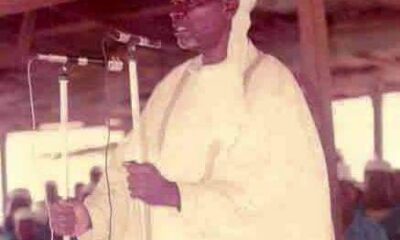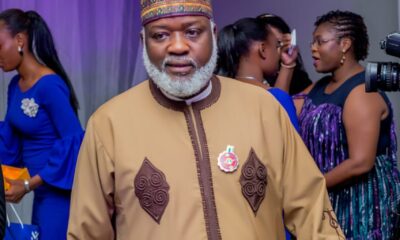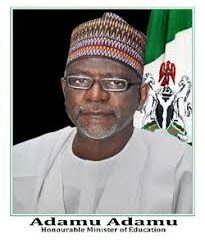Opinion
The Political Economy of Cryptocurrency
Opinion
Dr Bello Matwallle: Why Dialogue Still Matters in the Fight Against Insecurity
By Musa Iliyasu Kwankwaso
In the history of leadership, force may be loud, but wisdom delivers results. This is why security experts agree that while military action can suppress violence temporarily, dialogue is what permanently closes the door to conflict. It is a lesson the world has learned through blood, loss, and painful experience.
When Dr. Bello Matawalle, as Governor of Zamfara State, chose dialogue and reconciliation, it was not a sign of weakness. It was a different kind of courage one that placed the lives of ordinary citizens above political applause. A wise leader measures success not by bullets fired, but by lives saved.
Across conflict zones, history has consistently shown that force alone does not end insecurity. Guns may damage bodies, but they do not eliminate the roots of violence. This understanding forms the basis of what experts call the non-kinetic approach conflict resolution through dialogue, reconciliation, justice, and social reform.
When Matawalle assumed office, Zamfara was deeply troubled. Roads were closed, markets shut down, farmers and herders operated in fear, and citizens lived under constant threat. Faced with this reality, only two options existed: rely solely on military force or combine security operations with dialogue. Matawalle chose the path widely accepted across the world security reinforced by dialogue not out of sympathy for criminals, but to protect innocent lives.
This approach was not unique to Zamfara. In Katsina State, Governor Aminu Bello Masari led peace engagements with armed groups. In Maiduguri granted amnesty to repentant offenders of Boko Haram, In Sokoto, dialogue was also pursued to reduce bloodshed. These precedents raise a simple question: if dialogue is acceptable elsewhere, why is Matawalle singled out?
At the federal level, the same logic applies. Through Operation Safe Corridor, the Federal Government received Boko Haram members who surrendered, offered rehabilitation and reintegration, and continued military action against those who refused to lay down arms. This balance
rehabilitation for those who repent and force against those who persist is the core of the non-kinetic approach.
Security experts globally affirm that military force contributes only 20 to 30 percent of sustainable solutions to insurgency. The remaining 70 to 80 percent lies in dialogue, justice, economic reform, and addressing poverty and unemployment. Even the United Nations states clearly: “You cannot kill your way out of an insurgency.”
During Matawalle’s tenure, several roads reopened, cattle markets revived, and daily life began to normalize. If insecurity later resurfaced, the question is not whether dialogue was wrong, but whether broader coordination failed.
Today, critics attempt to recast past security strategies as crimes. Yet history is not blind, and truth does not disappear. Matawalle’s actions were rooted in expert advice, national precedent, and global best practice.
The position of Sheikh Ahmad Gumi, who publicly affirmed that Matawalle’s approach was appropriate and that military force accounts for only about 25 percent of counterinsurgency success, further reinforces this reality. Such views cannot be purchased or manufactured; they reflect established security thinking.
In the end, dialogue is not a betrayal of justice it is often its foundation. And no amount of political noise can overturn decisions grounded in evidence, experience, and the priority of human life.
Opinion
Matawalle: The Northern Anchor of Loyalty in Tinubu’s Administration
By Adebayor Adetunji, PhD
In the broad and competitive terrain of Nigerian politics, loyalty is often spoken of, yet rarely sustained with consistency, courage and visible action. But within the administration of President Bola Ahmed Tinubu, one Northern appointee has demonstrated this quality not as a slogan, but as a lifestyle, as a political principle and as a national duty — Hon. (Dr.) Bello Muhammad Matawalle, Minister of State for Defence.
Since his appointment, Matawalle has stood out as one of the most loyal, outspoken and dependable pillars of support for the Tinubu administration in the North. He has never hesitated, not for a moment, to stand firmly behind the President. At every turn of controversy, in moments of public misunderstanding, and at times when political alliances waver, Matawalle has continued to speak boldly in defence of the government he serves. For him, loyalty is not an occasional gesture — it is a commitment evidenced through voice, alignment, and sacrifice.
Observers within and outside the ruling party recall numerous occasions where the former Zamfara State Governor took the front line in defending the government’s policies, actions and direction, even when others chose neutrality or silence. His interventions, always direct and clear, reflect not just loyalty to a leader, but faith in the future the President is building, a future anchored on economic reform, security revival, institutional strengthening and renewed national unity.
But Matawalle’s value to the administration does not stop at loyalty. In performance, visibility and active delivery of duty, he stands among the most engaged ministers currently serving in the federal cabinet. His portfolio, centred on defence and security, one of the most sensitive sectors in the country, demands expertise, availability and unbroken presence. Matawalle has not only embraced this responsibility, he has carried it with remarkable energy.
From high-level security meetings within Nigeria to strategic engagements across foreign capitals, Matawalle has represented the nation with clarity and confidence. His participation in defence summits, international cooperation talks, and regional security collaborations has positioned Nigeria as a voice of influence in global security discourse once again. At home, his involvement in military policy evaluation, counter-terrorism discussions and national defence restructuring reflects a minister who understands the urgency of Nigeria’s security needs, and shows up to work daily to address them.
Away from partisan battles, Matawalle has proven to be a bridge — between North and South, civilian leadership and military institutions, Nigeria and the wider world. His presence in government offers a mix of loyalty, performance and deep grounding in national interest, the type of partnership every President needs in turbulent times.
This is why calls, campaigns and whisperings aimed at undermining or isolating him must be resisted. Nigeria cannot afford to discourage its best-performing public servants, nor tighten the atmosphere for those who stand firmly for unity and national progress. The nation must learn to applaud where there is performance, support where there is loyalty, and encourage where there is commitment.
Hon. Bello Matawalle deserves commendation, not suspicion. Support — not sabotage. Encouragement, not exclusion from political strategy or power alignment due to narrow interests.
History does not forget those who stood when it mattered. Matawalle stands today for President Tinubu, for security, for loyalty, for national service. And in that place, he has earned a space not only in the present political equation, but in the future judgment of posterity.
Nigeria needs more leaders like him. And Nigeria must say so openly.
Adebayor Adetunji, PhD
A communication strategist and public commentator
Write from Akure, Ondo State, Nigeria
Opinion
Drug Abuse Among People With Disabilities: The Hidden Crisis Nigeria Is Yet to Address
By Abdulaziz Ibrahim
Statistically Invisible, Persons with Disabilities feel shut out of Nigeria’s drug abuse war as a report from Adamawa reveals lacks data and tailored support needed, forcing a vulnerable group to battle addiction alone.
In Adamawa State, the fight against drug abuse is gaining attention, but for many people living with disabilities (PWDs), their struggles remain largely unseen. A new report has uncovered deep gaps in support, treatment, and data tracking for PWDs battling addiction despite official claims of equal access.
For nearly three decades, Mallam Aliyu Hammawa, a visually impaired resident of Yola, navigated a world increasingly shrouded by drug dependency. He first encountered psychoactive substances through friends, and what began as casual use quickly escalated into long-term addiction.
“I used cannabis, tramadol, tablets, shooters everything I could get my hands on,” he recalled. “These drugs affected my behaviour and my relationship with the people close to me.”
Family members say his addiction changed him entirely. His friend, Hussaini Usman, described feeling “sad and worried” when he realized Aliyu had fallen into drug use.
Aliyu eventually made the decision to quit. It was marriage and the fear of hurting his wife that finally forced him to seek a new path. “Whenever I took the drugs, I felt normal. But my wife was confused about my behaviour,” he said. “I decided I had to stop before she discovered the full truth of what I was taking.”
A National Problem With Missing Data
Nigeria has one of the highest drug-use rates in West Africa, according to the United Nations Office on Drugs and Crime (UNODC). Over 14 million Nigerians between the ages of 15 and 64 use psychoactive substances. Yet, within that massive user base, PWDs are statistically invisible.
There is almost no national data on drug abuse among persons with disabilitiesa critical gap that experts warn makes it impossible to design effective, inclusive rehabilitation programmes.
Ibrahim Idris Kochifa, the Secretary of the Adamawa State Association of Persons with Physical Disability, told this reporter that PWDs face unique, systemic pressures that intensify their vulnerability to drug abuse, specifically citing poverty, unemployment, isolation, and social discrimination.
“Whenever a person with disability is caught with drugs, the common decision is to seize the drugs and let him go,” Kochifa said, speaking on behalf of the disabled community leadership. “But if they consult us, we have advice to offer on how they can be treated and rehabilitated. Without involving us, no programme will fully benefit people with disabilities.”
NDLEA Responds
At the National Drug Law Enforcement Agency (NDLEA) Command in Adamawa, officials insist their services are open to everyone without discrimination.
Mrs. Ibraham Nachafia, the Head of Media and Advocacy for the NDLEA Adamawa State Command, said during an interview, “Our rehabilitation centre is open to all. There is no discrimination. Anyone including persons with disabilities can access treatment.”
While the official position suggests inclusiveness, disability advocates call it “tokenistic.” They argue that equal access on paper does not translate to tailored support in practice. True rehabilitation for PWDs requires specialized counselling that understands their unique traumas, physically accessible facilities, and significantly stronger community engagement to prevent relapse.
A Call for More Inclusive Action
Advocates are now urging the Nigerian government and drug-control agencies to build a response framework that recognizes PWDs as a vulnerable group in need of targeted support.
The advocate Goodness Fedrick warns that until rehabilitation and prevention programmes reflect the realities faced by people with disabilities, Nigeria’s battle against drug abuse will remain incomplete.
For people like Aliyu Hammawa, who managed to recover without structured support, the message is clear: many others may not be as fortunate.
This story highlights the urgent need for inclusive, data-driven, and community-supported approaches in Nigeria’s fight against drug addiction. Until the nation sees and serves this ‘hidden crisis,’ its overall battle against addiction will continue to be fought with one hand tied behind its back.
-

 Opinion4 years ago
Opinion4 years agoOn The Kano Flyovers And Public Perception
-

 Features4 years ago
Features4 years agoHow I Became A Multimillionaire In Nigeria – Hadiza Gabon
-

 Opinion5 years ago
Opinion5 years agoKano As future Headquarters Of Poverty In Nigeria
-

 History5 years ago
History5 years agoSheikh Adam Abdullahi Al-Ilory (1917-1992):Nigeria’s Islamic Scholar Who Wrote Over 100 Books And Journals
-

 Opinion4 years ago
Opinion4 years agoMy First Encounter with Nasiru Gawuna, the Humble Deputy Governor
-

 History5 years ago
History5 years agoThe Origin Of “Mammy Market” In Army Barracks (Mammy Ochefu)
-

 History4 years ago
History4 years agoThe History Of Borno State Governor Professor Babagana Umara Zulum
-

 News4 years ago
News4 years agoFederal University Of Technology Babura To Commence Academic Activities September